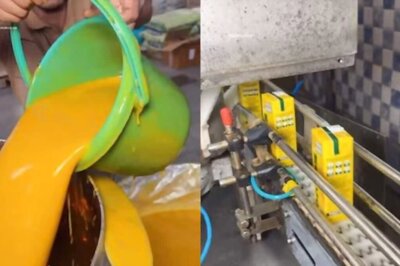
views
India became an IT hub in the 1990s and Indian programmers were sought-after during the dotcom boom. This was not because of some great policy decisions, rather it was because there was no policy.
Excessive regulation harms businesses. The drone rules have allayed the budding industry’s fears and are a welcome change from the existing rules under which obtaining license for drones is a herculean task.
Drones are touted as the next big thing after IT. The technology is disruptive and has the potential to touch people’s lives in all spheres—from transportation of goods, and surveillance to weather survey and studying agriculture.
The new drone rules are much more user- and business-friendly. I would go to the extent of saying that this policy could go down in history as one of the best decisions that Narendra Modi government 2.0 and Minister of Civil Aviation Jyotiraditya Scindia have taken. Some of the highlights of the new drone policy are:-
1. The provisions under Aircraft Rules, 1937 will not be applicable to drones weighing up to 500 kg. This is a significant change because Aircraft Rules, 1937 are specifically applicable for passenger aircraft.
2. A significant number of people in India fly nano and micro drones, including operators of model aircraft. One can see drones being used at marriage parties as well as during shooting of shows and movies. People flying these drones and model aircraft now do not need a drone pilot license. This singular step can boost employment. Being a drone pilot is considered one of the coolest things today.
3. Drone imports will still be controlled by the Directorate General of Foreign Trade or DGFT. Initially, this could be seen as bit of an impediment for entrepreneurs who are dependent on foreign imports of certain drone parts. However, in the long run, this provision could bolster manufacturing of these parts in India and then even exporting them. The government, however, can currently look at relaxing the rules for import of drones/drone parts and tighten the norms as time goes by. Such a policy could support the nascent drone industry in India. I would recommend that drone imports controlled by DGFT could be done away with for the time being.
4. Creation of drone corridor is likely to change the face of the Indian economy. Logistics operation, last-mile connectivity, transporting goods between two towns and the cost of connectivity, in general, are set to change dramatically. Not many have realised the power of creating drone corridors. All that remains to be seen is how this rule is taken forward by the government in improving logistics connectivity and creation of drone highways in the times to come.
5. The section on drone research and development is futuristic. If harnessed and nurtured properly, India can see the emergence of many centres of excellence for drones and drone technologies. Government needs to create an equivalent of ‘Silicon Valley’ for the drones so that organisations dealing with hardware, software, artificial intelligence etc. can come together and take this endeavour forward.
6. A number of companies world over are working on unmanned traffic management (UTM), including an Indian company. These companies could now collaborate with the government of India to provide unmanned traffic information as well as work as service providers for tracking drones and offering drone operators a simple no permission, no takeoff (NPNT) nod.
7. Third-party drone insurance could be adequate as specified in the rules. However, drones are costly equipment. Readers would be surprised to know that most of these drones cost more than a small hatchback. Therefore, owners of these drones may want to go for comprehensive insurance. There is a huge opportunity for insurance and insurance facilitation companies to explore this area. In the times to come, the numbers for drone insurance may well overtake the numbers for vehicle insurance, globally, since drones are set to replace many of the traditional workforce and industries.
8. A ‘Drone Promotion Council’ is the need of the hour, as the draft rules rightly identify. Countries that do not board the ‘Drone Bus’ may get left behind in economic progress in near future.
The drone policy is a welcome change. It is a well-thought-out and simplified policy document. It is in consonance with Prime Minister Modi’s vision for India, in terms of reducing unemployment, improving ease of doing business, generating self-employment avenues, and emerging as a global leader in technology. What the future holds will entirely depend on how these rules are interpreted on the ground and how much of red-tapism we are willing to shun.
Read all the Latest News, Breaking News and Assembly Elections Live Updates here.




















Comments
0 comment